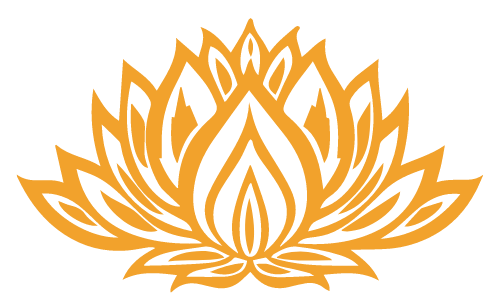DEATHWALKER'S GUIDE TO LIFE SEASON 3
EPISODE 8
Family Secrets
Stone trail up Diamond Hill in Letterfrack, Connemara, Ireland
Source: Wikimedia Commons.
OCTOBER 14, 2023
EPISODE 8
Family Secrets
Death in Print: The Last Days of Joy by Anne Tiernan, Meet: Author Anne Tiernan, Death on Screen: A Man Called Otto
Kerry Sunderland speaks with author Anne Tiernan, who wrote The Last Days of Joy, the bestselling book club pick that explores the aftermath of a suicide attempt and the perils of family secrets.
Listen to Episode 8 on the following podcast platforms
Or, if you've already listened to the show, scroll down for more info and links . . .
DEATH IN PRINT
The Last Days of Joy




The Last Days of Joy is a compelling story that examines the legacy of family secrets and intergenerational trauma that results when a mother doesn’t want to be a mother. It’s an engrossing family drama about three siblings, Conor, Frances and Sinead, who are all scarred in their own way by their mother’s ambivalence or neglect, even before she unsuccessfully attempts to take her own life and ends up hovering between life and death for a large part of the story.
The first novel to be published by Hachette's new NZ imprint, Moa Press, The Last Days of Joy has enjoyed a decent run on the Nielsen BookScan New Zealand bestseller list this year and has attracted four stars and 30-odd reviews on Goodreads.
The story is told, in third person, by the three Tobin siblings along with their mother, Joy, who reflects on her troubled life (in first person) as she occupies a liminal space between life and death.
There’s a strong character arc for all three Tobin siblings, with redemption for each at the end, but it is perhaps Sinead who experiences the most significant transformation. While Tiernan is clear Joy's story is not her mother's story, and she is not Sinead, her own life experience informs both characters.
Like the author, Sinead moves between two locations on opposite sides of the globe: Navan in County Meath, a small town near Dublin, and where Tiernan grew up; and Tauranga, where the novel’s Irish family, like the author's, have settled.
Tiernan weaves a feminist thread throughout the story, which often provides comic relief. For example, when elder sister Frances' husband Harry has a vasectomy and is sent home with orders to recuperate afterwards by lying on the couch for the weekend to watch the cricket, Frances is secretly seething with the unfairness of it:
"Imagine if getting an abortion was as easy. If men got pregnant, it would be. 'Listen, Lauren said to her once, 'if men got pregnant we'd be able to get an abortion at a drive-through. Side of fries with that, darl?'"
Of course, Irish women were only granted reproductive choice in 2019, which makes me wonder, would Joy have been a happier mother – or even a mother at all – if she’d had the choices women have today?
And Tiernan also saddles Sinead with a rather large dilemma, as she struggles to write her second book after her first was a bestseller - a predicament Tiernan now finds herself in (although there can be no lazy solutions in real life).
When promoting The Last Days of Joy across the ditch in Australia, Hachette posed the question, “If you had one last chance, what would you tell your mother?”
But perhaps a more appropriate question, given the premise of the book, would be, “If you had one last chance, what would you like your mother to tell you?”
Given that the best grist for the book club mill are those books that feature unique and complex characters, unique voices, plots that dance, and explore the big issues in life. That The Last Days of Joy is a top book club pick comes as no surprise. It’s a book that will lead to the heartiest of discussions.
The first novel to be published by Hachette's new NZ imprint, Moa Press, The Last Days of Joy has enjoyed a decent run on the Nielsen BookScan New Zealand bestseller list this year and has attracted four stars and 30-odd reviews on Goodreads.
The story is told, in third person, by the three Tobin siblings along with their mother, Joy, who reflects on her troubled life (in first person) as she occupies a liminal space between life and death.
There’s a strong character arc for all three Tobin siblings, with redemption for each at the end, but it is perhaps Sinead who experiences the most significant transformation. While Tiernan is clear Joy's story is not her mother's story, and she is not Sinead, her own life experience informs both characters.
Like the author, Sinead moves between two locations on opposite sides of the globe: Navan in County Meath, a small town near Dublin, and where Tiernan grew up; and Tauranga, where the novel’s Irish family, like the author's, have settled.
Tiernan weaves a feminist thread throughout the story, which often provides comic relief. For example, when elder sister Frances' husband Harry has a vasectomy and is sent home with orders to recuperate afterwards by lying on the couch for the weekend to watch the cricket, Frances is secretly seething with the unfairness of it:
"Imagine if getting an abortion was as easy. If men got pregnant, it would be. 'Listen, Lauren said to her once, 'if men got pregnant we'd be able to get an abortion at a drive-through. Side of fries with that, darl?'"
Of course, Irish women were only granted reproductive choice in 2019, which makes me wonder, would Joy have been a happier mother – or even a mother at all – if she’d had the choices women have today?
And Tiernan also saddles Sinead with a rather large dilemma, as she struggles to write her second book after her first was a bestseller - a predicament Tiernan now finds herself in (although there can be no lazy solutions in real life).
When promoting The Last Days of Joy across the ditch in Australia, Hachette posed the question, “If you had one last chance, what would you tell your mother?”
But perhaps a more appropriate question, given the premise of the book, would be, “If you had one last chance, what would you like your mother to tell you?”
Given that the best grist for the book club mill are those books that feature unique and complex characters, unique voices, plots that dance, and explore the big issues in life. That The Last Days of Joy is a top book club pick comes as no surprise. It’s a book that will lead to the heartiest of discussions.
FIND OUT MORE ABOUT THE LAST DAYS OF JOY
Find out more about the book
Read Erica Stretton's review of The Last Days of Joy on Kete books
Read Clare Travaglia's review on NZ Review of Books
Find out more about the book
Read Erica Stretton's review of The Last Days of Joy on Kete books
Read Clare Travaglia's review on NZ Review of Books
'After you died, I felt your presence for such a long time. In my darkest moments I used to feel you, like sunlight giving me strength.'
- Anne Tiernan
- Anne Tiernan
KŌRERO / CONVERSATION
Meet Anne Tiernan

Above: Anne Tiernan
Anne Tiernan was born in Zambia and grew up in Navan, a small town 30 miles from Dublin, Ireland. She worked in banking for several years before travelling the world and moving to New Zealand in 2005. She now lives in Tauranga with her Kiwi husband and three children.
Anne was pregnant when she heard the news, in 2010, that her mother had taken her own life.
While Tiernan stresses that the book is not autobiographical, it is imbued with an emotional truth informed by her personal experience.
Our conversation explores the impact Anne's mother's death had on her and how it led to the creation of her bestselling debut novel.
Anne was pregnant when she heard the news, in 2010, that her mother had taken her own life.
“When I got the news that she had died, I went into labour and gave birth to my little boy [her third child] the next day. Because of that, and because I couldn’t go to Ireland for the funeral, and because of the emotional distance between me and my mother, I didn’t really grieve her death. I felt very removed from what had happened.
“When I started to write this book, seven years later, it became a way for me to process her death. It took me two years to write it and I think I went through a lot of the same feelings that Joy’s children do in the book, especially Sinead, who starts in a place of anger and numbness.”
While Tiernan stresses that the book is not autobiographical, it is imbued with an emotional truth informed by her personal experience.
Our conversation explores the impact Anne's mother's death had on her and how it led to the creation of her bestselling debut novel.
See Anne Tiernan at the 2023 Nelson Arts Festival
DEATH ON SCREEN
A Man Called Otto
A Man Called Otto is the US adaptation of the 2015 Swedish film, A Man Called Ove, based on the bestselling 2012 novel of the same name by Fredrick Backman.
The US film is a faithful retelling of the Swedish, with new names for an English speaking audience ostensibly being the only difference.
Ove, who is played by Swedish actor Rolf Holder Lassgard (now 68) is now called Otto, and played by Amercian superstar Tom Hanks (now 67). Both leading men are widowers, whose wives were both called Sonja, spelt slightly differently.
Both Ove and Otto attempt to kill themselves, unsuccessfully, first by hanging, then by gassing themselves with carbon monoxide and finally by shotgun. Otto is interrupted by his new neighbours: pregnant Marisol, who is from Mexico, her husband Tommy, and their daughters Abby and Luna, who try to befriend him. (In the original film, Ove is likewise interrupted by his new neighbours, except she is an Iranian immigrant called Parvane, who has a Swedish husband and two children).
In both versions, Otto helps his ageing neighbour Anita, despite holding a grudge against her husband – Rune in the Swedish version and Reuben in the US version, both paralysed and non-verbal stroke survivors. Ove overcomes prejudices to support a young gay man, Mirsad, while Otto welcomes into his home a transgender student, Malcolm.
I have watched both versions and the latest release appears to more strident in its message about accepting people regardless of their gender or race but perhaps that’s just because I am the creature of a similar culture.
The plots diverge in only one significant way, with the introduction in A Man Called Otto of a pesky social media journalist called Sharie Kenzie who becomes a catalyst towards the end of the film. I usually prefer British and European films, and enjoy other languages washing over me while reading subtitles, but in this case, Tom Hanks and his fellow cast members do a decent job. A Man Called Otto does good work to challenge bigotry, show us how dangerous isolation and loneliness can be and remind us how important it is to reach out and connect.
If you or someone you know needs help, please contact:
Lifeline – 0800 543 354 or (09) 5222 999 within Auckland
Youthline – 0800 376 633, free text 234 or email talk@youthline.co.nz or online chat
Samaritans – 0800 726 666
Suicide Crisis Helpline – 0508 828 865 (0508 TAUTOKO)
Visit the Life Matters Suicide Prevention Trust | Te Whare Oranga Ngākau at https://www.lifematters.org.nz/
The US film is a faithful retelling of the Swedish, with new names for an English speaking audience ostensibly being the only difference.
Ove, who is played by Swedish actor Rolf Holder Lassgard (now 68) is now called Otto, and played by Amercian superstar Tom Hanks (now 67). Both leading men are widowers, whose wives were both called Sonja, spelt slightly differently.
Both Ove and Otto attempt to kill themselves, unsuccessfully, first by hanging, then by gassing themselves with carbon monoxide and finally by shotgun. Otto is interrupted by his new neighbours: pregnant Marisol, who is from Mexico, her husband Tommy, and their daughters Abby and Luna, who try to befriend him. (In the original film, Ove is likewise interrupted by his new neighbours, except she is an Iranian immigrant called Parvane, who has a Swedish husband and two children).
In both versions, Otto helps his ageing neighbour Anita, despite holding a grudge against her husband – Rune in the Swedish version and Reuben in the US version, both paralysed and non-verbal stroke survivors. Ove overcomes prejudices to support a young gay man, Mirsad, while Otto welcomes into his home a transgender student, Malcolm.
I have watched both versions and the latest release appears to more strident in its message about accepting people regardless of their gender or race but perhaps that’s just because I am the creature of a similar culture.
The plots diverge in only one significant way, with the introduction in A Man Called Otto of a pesky social media journalist called Sharie Kenzie who becomes a catalyst towards the end of the film. I usually prefer British and European films, and enjoy other languages washing over me while reading subtitles, but in this case, Tom Hanks and his fellow cast members do a decent job. A Man Called Otto does good work to challenge bigotry, show us how dangerous isolation and loneliness can be and remind us how important it is to reach out and connect.
If you or someone you know needs help, please contact:
Lifeline – 0800 543 354 or (09) 5222 999 within Auckland
Youthline – 0800 376 633, free text 234 or email talk@youthline.co.nz or online chat
Samaritans – 0800 726 666
Suicide Crisis Helpline – 0508 828 865 (0508 TAUTOKO)
Visit the Life Matters Suicide Prevention Trust | Te Whare Oranga Ngākau at https://www.lifematters.org.nz/
A Man Called Otto
Catch up on previous episodes
Deathwalker's Guide to Life kicked off in 2021. Catch up by browsing past episodes, which you can listen to on all the major podcast platforms.







